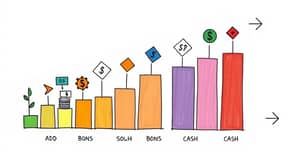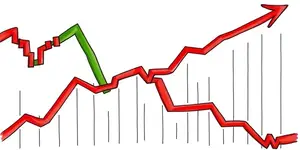
Market corrections can test even the most seasoned traders, leading to hasty decisions and emotional turmoil. By adopting drawdown limits, investors and traders create a structured safety net that guards capital and maintains focus. In this article, we explore key concepts, practical examples, and implementation strategies to harness mechanical rule frees traders from emotion and navigate volatility with confidence.
Drawdown measures the reduction of an account’s value from its peak to its lowest point before recovering to a new high. It indicates the temporary decline not the total loss of capital and helps investors assess portfolio performance during downturns. Maximum drawdown, meanwhile, represents the largest single drop from peak to trough over a specified period, setting the benchmark for worst-case scenarios.
Drawdown can be expressed in absolute dollar terms or as a percentage of starting capital. For instance, a portfolio that falls from $50,000 to $40,000 experiences a drawdown of $10,000 or 20%. Recognizing these fluctuations is essential for setting realistic expectations and maintaining a disciplined approach under pressure.
Professional traders and fund managers widely adopt drawdown limits as a core risk control and emotional discipline technique. By capping losses at a predetermined threshold—commonly between 10% and 20%—they prevent accounts from eroding to dangerous levels. These limits foster a consistent approach and disciplined execution regardless of market conditions, reducing impulse-driven trades and eliminating “revenge trading.”
Moreover, drawdown limits provide an objective stopping point during turbulent sessions. When losses exceed a set barrier, traders are forced to pause and reassess, rather than chasing losses amid heightened volatility. This structured pause can preserve capital and ensure that decisions are grounded in strategy, not emotion.
Traders typically employ two primary categories of drawdown limits: daily and maximum. Daily drawdown limits restrict losses within a single trading session, resetting at the start of the next day. Maximum drawdown limits, on the other hand, apply to the entire account lifecycle, enforcing a hard cap regardless of interim gains.
Daily drawdown limits often recalculate based on the next day’s opening balance if the account closed higher. This mechanism rewards disciplined growth while maintaining protective guardrails against sudden downturns.
Consider a trading account that peaks at $10,000 before falling to $8,000. This 20% drawdown may feel alarming without context, but it illustrates a standard market ebb. By setting a maximum drawdown limit of 25%, the trader ensures sufficient room for normal fluctuations while preventing catastrophic losses.
A second illustration involves a $100,000 account with a 4% daily drawdown limit. Should the account balance increase to $110,000, the next day’s allowable loss automatically adjusts to $4,400. This dynamic scaling preserves risk parameters proportionally, keeping traders aligned with evolving account value.
Market corrections often trigger fear, frustration, and impulsivity, driving traders to overreact. They may liquidate profitable positions prematurely or chase losses in an attempt to recover, compounding damage. Understanding the psychological traps that lead to such behavior is crucial for developing resilience.
Drawdown limits act as guard against excessive losses and panic, serving as predefined boundaries that deflect emotional escalation. When a threshold is breached, the rule forces a pause for analysis rather than a gut-driven response. This moment of clarity can be the difference between a temporary setback and a permanent account blowup.
Setting effective drawdown limits begins with assessing personal risk tolerance. Conservative traders might choose a 10% maximum drawdown, while those with a higher appetite for risk could stretch to 15% or 20%. It’s important to strike a balance that prevents debilitating stress without stifling potential gains.
Regularly reviewing performance data and market volatility ensures that drawdown limits remain aligned with evolving goals and conditions. However, frequent tweaks can erode the very discipline that drawdown limits are designed to uphold, so changes should be infrequent and based on thorough analysis.
Drawdown limits are an essential tool for traders seeking to maintain composure and protect capital during turbulent periods. By introducing a clear framework for losses—whether on a daily or maximum account basis—traders impose self-discipline and remove emotion from critical decisions. Embracing these risk controls will not only enhance longevity in the markets but also foster a mindset geared toward sustainable success.
Whether you are an individual investor or part of a professional firm, integrating drawdown limits into your trading plan can transform panic-prone strategies into structured, resilient approaches. Start defining your limits today and experience the power of disciplined risk management.
References













